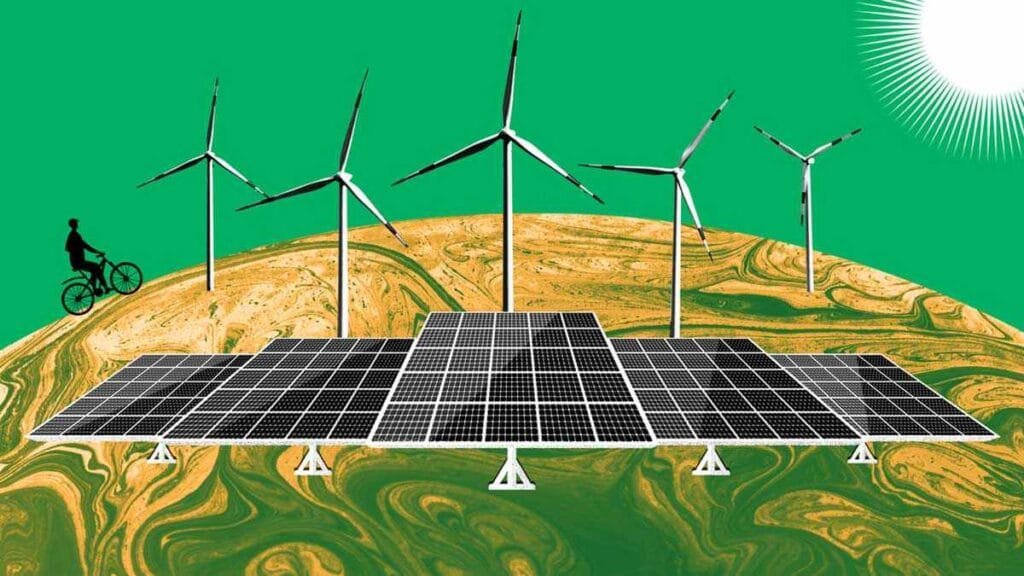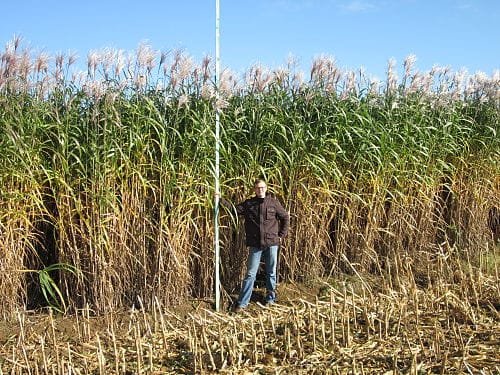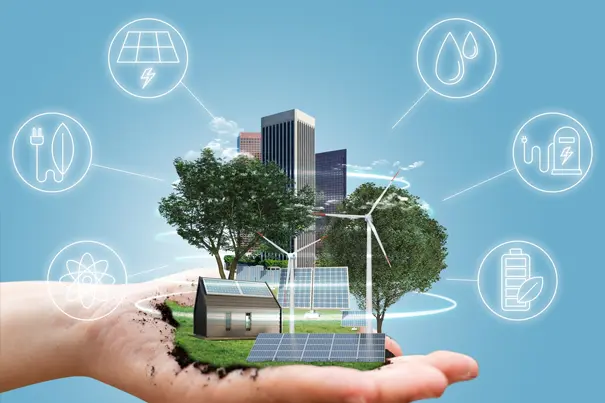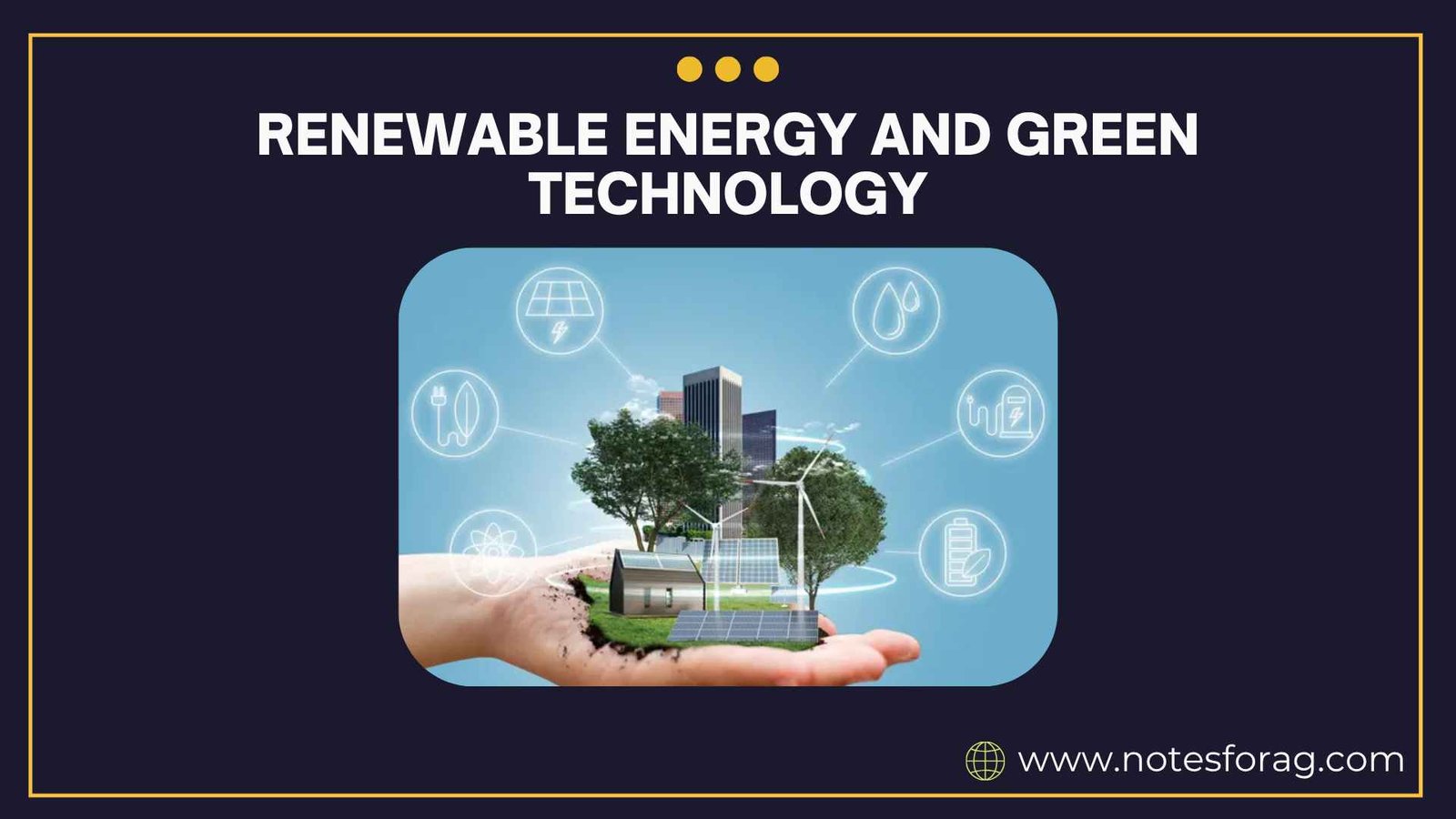Introduction
In the face of growing environmental challenges and rising energy demands, the world is shifting its focus toward sustainable solutions like renewable energy and green technology. These innovations offer promising alternatives to conventional fossil fuels, aiming to reduce greenhouse gas emissions, combat climate change, and create a cleaner and healthier planet.
Renewable energy refers to energy sources that are naturally replenished, such as solar, wind, hydro, biomass, and geothermal energy. Green technology, on the other hand, includes tools, practices, and innovations that reduce environmental harm and improve energy efficiency. Together, they represent the backbone of a sustainable future.
Define Renewable energy?

Renewable energy is energy that comes from natural sources that are constantly replenished, such as sunlight, wind, water (hydro), biomass, and geothermal heat. Unlike fossil fuels, these sources do not run out over time and produce little to no pollution, making them cleaner and more sustainable for the environment.
Summary of Renewable energy
- Renewable energy harnesses endless natural sources like solar, wind, and geothermal to power the world cleanly and sustainably.
- Green technologies such as electric vehicles, smart grids, and eco-buildings cut emissions, boost efficiency, and fuel economic growth.
- The future lies in integrating renewables with storage systems and smart policies to make sustainability a global standard.
Table of Contents
RENEWABLE ENERGY SOURCES
Solar Energy
Solar energy harnesses the power of the sun using photovoltaic (PV) panels or solar thermal systems. PV systems convert sunlight directly into electricity, while thermal systems use solar heat for water heating or electricity generation. Solar energy is abundant, clean, and widely applicable from rooftops to large-scale solar farms.
Wind Energy
Wind energy utilizes turbines to convert wind motion into electricity. It is one of the fastest-growing renewable energy sources globally due to its scalability and minimal environmental impact. Wind farms can be located onshore or offshore, providing flexible installation options based on geography and wind availability.
Hydropower
Hydropower generates electricity by using the force of moving waterusually from rivers or damsto turn turbines. It is a well-established renewable source known for its reliability and high energy output. Small-scale hydro systems are now being developed to power remote areas and reduce ecological disruption.
Biomass Energy

Biomass energy is derived from organic materials such as wood, agricultural residues, and waste. It can be used for heating, electricity, and even as a fuel for vehicles when processed into biofuel. Biomass helps manage waste and can be a carbon-neutral option when sustainably sourced.
Geothermal Energy
Geothermal energy taps into the Earth’s internal heat to produce electricity or heating. This method involves drilling into geothermal reservoirs to access steam or hot water. It is a consistent and low-emission energy source but limited to regions with significant geothermal activity.
BENEFITS OF RENEWABLE ENERGY
Environmental Sustainability
Renewable energy reduces dependency on fossil fuels, which are major contributors to air pollution and greenhouse gas emissions. By using clean sources, we minimize environmental degradation and promote ecosystem health.
Energy Security
Diversifying energy sources through renewables enhances national energy security by reducing reliance on imported fuels. Localized energy production can stabilize energy prices and improve resilience against global energy market fluctuations.
Economic Growth and Job Creation
Investing in renewable energy technologies drives economic development and generates employment across sectors such as manufacturing, installation, and maintenance. Green industries are becoming major contributors to national economies.
Health Improvements
Switching to clean energy improves public health by reducing pollutants that contribute to respiratory diseases, cardiovascular issues, and premature deaths. Cleaner air and water significantly impact community well-being.
Challenges and Limitations
Despite numerous advantages, renewable energy also faces challenges such as high initial investment, intermittent energy supply, and the need for advanced storage technologies. Grid infrastructure must also be adapted to accommodate decentralized and variable energy sources.
GREEN TECHNOLOGY

Definition and Scope
Green technology refers to innovations and applications that conserve natural resources, minimize environmental impact, and support sustainable development. It spans across various sectors, including energy, construction, transportation, agriculture, and waste management.
Types of Green Technologies
Energy-Efficient Appliances
Modern appliances designed to consume less electricity or fuel play a critical role in reducing energy demand. LED lights, smart thermostats, and inverter-based electronics are examples that promote energy conservation at the consumer level.
Green Building Design
Green architecture incorporates sustainable materials, natural lighting, efficient insulation, and renewable energy systems to construct energy-saving buildings. LEED-certified structures are now symbols of eco-friendly construction.
Electric and Hybrid Vehicles
Transport is a significant contributor to global emissions. Electric and hybrid vehicles reduce dependence on fossil fuels and cut carbon emissions, making them essential for green urban mobility.
Waste-to-Energy Systems
These systems convert waste into usable energy, helping reduce landfill volumes and harnessing energy from otherwise discarded materials. Technologies like incineration, gasification, and anaerobic digestion are widely used.
Water Conservation Technologies
Drip irrigation, water recycling systems, and low-flow plumbing fixtures help reduce water consumption in agriculture, industry, and homes, ensuring sustainable water use.
ADVANTAGES OF GREEN TECHNOLOGY
Pollution Reduction
Green technologies help in reducing air, water, and soil pollution by minimizing waste generation, controlling emissions, and using non-toxic materials.
Resource Efficiency
Efficient use of energy, water, and raw materials lowers environmental impact and conserves finite resources for future generations.
Innovation and Competitiveness
Sustainable technologies drive innovation, offering competitive advantages to businesses and encouraging eco-conscious consumerism.
Improved Quality of Life
Cleaner environments, energy savings, and sustainable urban infrastructure contribute to healthier, more livable communities.
INTEGRATING RENEWABLE ENERGY AND GREEN TECHNOLOGY
Smart Grids and Energy Storage
Integration of renewable energy requires smart grids that manage energy flow dynamically. Battery storage systems like lithium-ion and flow batteries help store excess energy for use during peak demand or low production times.
Policy Support and Incentives
Governments play a crucial role by providing subsidies, tax benefits, and regulatory frameworks to encourage the adoption of green technologies and renewables.
Public Awareness and Education
Raising awareness about the benefits of renewable energy and green technology helps drive behavioral change and increases public acceptance of sustainable practices.
Corporate Sustainability
Businesses adopting green practices and renewable energy not only reduce their carbon footprint but also enhance brand image and comply with environmental regulations.
Conclusion
As humanity confronts the twin crises of climate change and energy scarcity, renewable energy and green technology emerge as humanity’s best tools for building a sustainable future. Renewable energy sources such as solar, wind, hydropower, biomass, and geothermal provide clean alternatives to fossil fuels, significantly reducing carbon emissions and limiting ecological damage. Reports estimate that by 2050, these sources could supply up to 90% of global electricity, drastically cutting greenhouse gas emissions and enhancing global health.
Green technologies amplify these benefits by improving energy efficiency and resource conservation. Innovations like LED lighting, smart thermostats, electric vehicles, energy-efficient appliances, green buildings, and waste-to-energy systems reduce pollution and drive economic growth. Global investment in green tech reached $2.1 trillion in 2024, with developers and governments recognizing the strategic importance of sustainable infrastructure.
Adopting renewables at scale, however, requires careful planning and innovation to overcome challenges like intermittency, upfront capital costs, and grid adaptation. Solutions such as energy storage systems including lithium-ion and flow batteries, smart grids, distributed microgrids, and hybrid power systems are being deployed to stabilize and optimize energy networks. Government incentives including feed-in tariffs, subsidies, tax breaks, and public awareness campaigns further accelerate adoption.
Looking forward, emerging trends like offshore wind, floating solar installations, hydrogen energy, and AI-driven predictive maintenance promise to revolutionize the energy sector. Countries like China, already a global leader, continue scaling renewables through massive investment and innovation. Meanwhile, international collaboration and policy frameworks aim to triple renewable capacity and double efficiency by 2030, though funding must keep pace to meet these goals.
Ultimately, integrating renewable sources, green technologies, intelligent systems, and supportive policy forms a resilient, low-carbon energy ecosystem. This holistic approach safeguards the environment, drives economic vitality, improves public health, and ensures energy access for all, paving the way for a thriving, sustainable world.
Frequently Asked Questions (FAQs)
What is renewable energy and how does it work?
Renewable energy is power made from natural sources like the sun, wind, and water that never run out and produce electricity or heat without polluting the environment.
Why is renewable energy important for climate change?
It helps fight climate change by producing very little or no carbon dioxide, making the air cleaner and reducing global warming.
What are the main types of green technology?
Green technology includes tools like solar panels, wind turbines, electric vehicles, energy-saving appliances, smart power systems, and eco-friendly buildings that protect nature and save energy.
Related Articles

